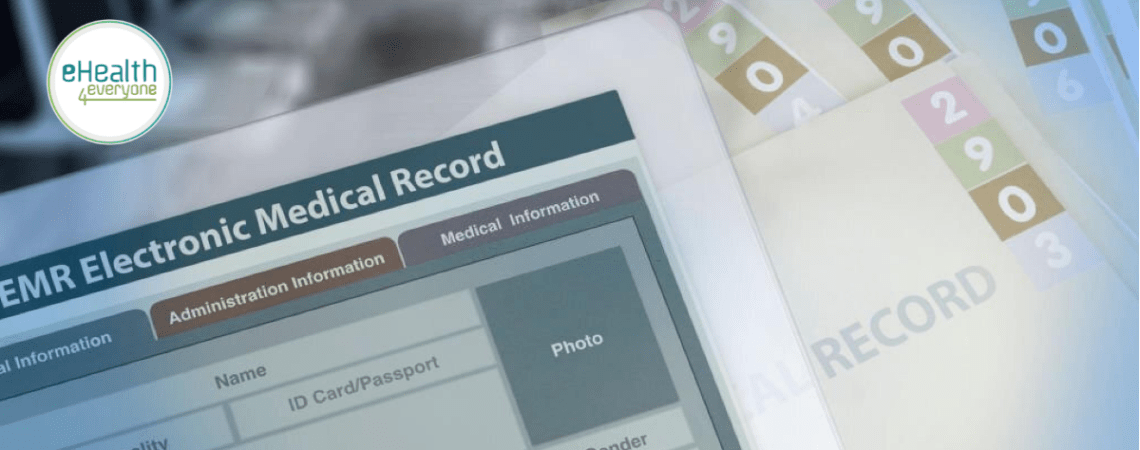Despite the many benefits of Electronic Medical Records (EMRs) including reductions in medication errors and unnecessary investigations, as well as improved communication and interaction among primary care providers, their implementation isn’t always easy. Getting an entire organization on board with an EMR plan and finding the time and resources to execute the plan is a major undertaking (Bain, 2015). The status of any practice needs to be analyzed in terms of efficiency, effectiveness and organization such that if the current workflow is well mapped out, the workflow on the EMR should continue that trend.
Important areas to be looked into are the computer literacy of staff, availability of internet access, facility readiness, financial feasibility and practice priorities. The planning of the EMR implementation will include an analysis of tasks that will be started, maintained or eliminated. Looking at workflow and processes allows for the ability to modify these elements to suit electronic records, in some places, cutting out steps (no need to get charts from the file room as data will be accessed on a computer), and adding steps (electronic connection to the pharmacy for transfer of prescriptions).
What is EMR implementation?
Implementation is a term that is not specific to EMR systems. According to the University of South Florida (USF) Health Morsani College of Medicine, implementation refers to integrating a software-based service or component into the workflow of an organizational structure or an individual end-user. Therefore, EMR implementation would refer to the process of planning and carrying out the integration of EMR software and components in a healthcare organization.
Common EMR implementation hurdles
1. Technical Ability
Digital literacy in healthcare varies by factors like location and age of the medical facility. For instance, according to USF Health Morsani College of Medicine, rural healthcare providers tend to trail behind urban ones when implementing EMRs because they may have trouble with information technology (IT) support or lack internet connectivity at their facilities. This may lead them away from using technologies as fast as more advanced computer systems would allow. It is also often difficult for older healthcare providers to get used to the newest technologies. The process of learning these new methods and adapting to them can be time-consuming, especially if they feel that what they are doing already works well enough in their minds.
2. Cost
According to a chart from the National Center for Biotechnology Information, cost is one of the major challenges EMR implementation has faced across different healthcare facilities. EMRs can be expensive in both implementation and usage. Directing resources to invest in training, support, and the physical infrastructure itself can be a difficult barrier, especially for smaller practices.
3. People
When healthcare providers roll out EMRs, they will have to deal with patients and administrative staff who reject them or are easily discouraged. Unfortunately, not everyone is on board with the idea of using and implementing EMRs.
4. Usability
The importance of overcoming EMR system usability challenges cannot be overstated. Frustrated physicians and nurses will not make productive team members, so it is important for practices to have clear navigation with easy-to-use tools that do not overwhelm providers’ workflow or understanding of patient records.
How to conquer some of these hurdles
-
Have A Strategic Plan
The initial step of EMR implementation is to come up with a detailed strategic plan for the activities ahead. Before making the decision to implement EMRs, it is important to address the following: lay out the funding first beforehand, assign duties and responsibilities for the team members, identify the physician champions, and create a space for mutual support and dependence. Also, the implementing team should be ready with contingency plans. This is because workforce productivity may decrease, workflow may go haywire or even patients may get annoyed during the implementation phase. An important point to remember here is that preparation is the key to successful EMR implementation.
-
Put The Patient First
While making decisions on the EMR implementation, think about how and why it would benefit the patients. In a value-based healthcare system, the wants of the patient are of utmost importance. After all, the largest user group in the EMR system is the patient.
-
Ensure Ample Training
The motive behind EMR implementation is to streamline the process and improve efficiency. If employees fail to use the system effectively and continue to follow traditional methods, the goals will remain unattainable. Employing a comprehensive training plan for staff and communicating to them how the new system benefits patient care will help to make their job easier and more efficient.
Bottomline
There are many barriers to the successful deployment of an EMR system which can be alleviated with proper planning and strategic execution. Although the process of changing from a paper file system to an EMR may seem daunting, using an EMR will result in an increase in efficiency and patient satisfaction, improvement in productivity, increase in data utilization, and long-term reduction in costs. A well-organized and thoroughly planned process is necessary for a smooth transition and implementation of an EMR system and many resources are available to achieve this goal (Hillestad et al., 2015).
At eHealth4everyone, our EMR (SmartaCare) implementation is seamless. The SmartaCare EMR has been installed in clinics, hospitals, dialysis units, universities, and other locations across Nigeria.
To set up your SmartaCare EMR, send an email to bizdev@e4email.net or call 09021720570.
External links
2.https://www.healthaffairs.org/doi/full/10.1377/hlthaff.24.5.1103



